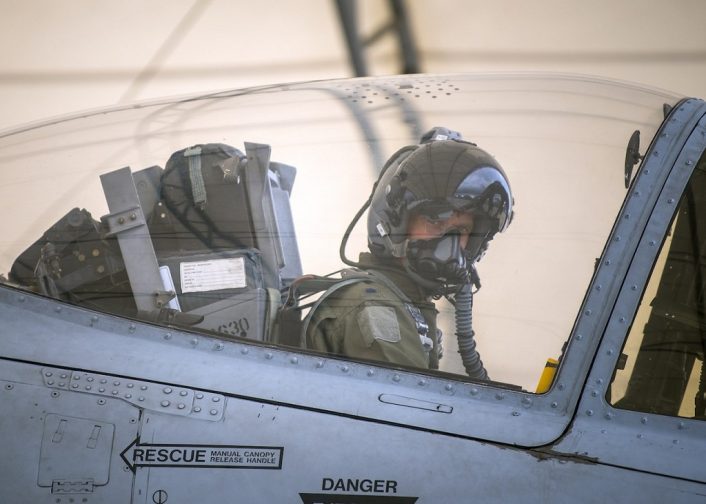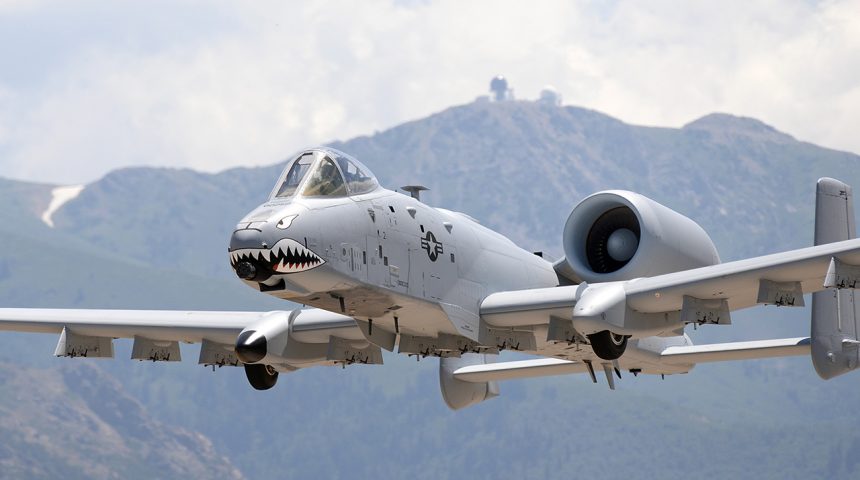The A-10 Common Fleet Initiative will keep the aircraft flying into the 2030s.
The A-10C Thunderbolt II, affectionately known by its pilot as “Warthog”, will get a new major upgrade trough the A-10 Common Fleet Initiative, that will keep it in the U.S. Air Force inventory until late 2030s, Combat Aircraft magazine recelty reported.
The new upgrades come after the completion, at the end of July 2019, of a first re-winging program that saw the installation of new wings, built by Boeing, on 173 A-10s, 162 of which were installed by the 571st Aircraft Maintenance Squadron at the Ogden Air Logistics Complex at Hill Air Force Base and the remaining 11 were re-winged at Osan Air Base in South Korea. According to the Air Force Materiel Command, the upgraded wings should last for up to 10,000 flight hours without requiring a depot inspection. One month later, the U.S. Air Force awarded Boeing a second contract, worth up to 999M USD, that will provide up to 112 new wing assemblies, completing the re-winging of all 281 A-10s currently in inventory.
Since the new wings will make possible for the A-10C to stay in service until the late 2030s, the Air Force needed also the aircraft to be a credible and lethal threat in that timeframe, should the need to deploy it during an eventual high-end conflict arise. That need prompted the initiation of the A-10 Common Fleet Initiative that, according to Combat Aircraft, already started implementing some of the new upgrades.

The Air Force, in fact, has recently started fielding a new improved version of the Thales Visionix Scorpion Helmet Mounted Display System, used by A-10 pilots following the Helmet Mounted Integrated Targeting (HMIT) program in 2012. The main modification is the replacement of the original magnetic tracking sensor with a new sensor known as HObIT (Hybrid Optical-based Inertial Tracker), which should track pilot head movements more accurately. As our Editor David Cenciotti wrote in a past article:
Developed by GentexVisionix, the Scorpion is a monocle-based system that can be applied to a variety of helmet shells, that requires just a single, small interface control unit and one magnetic sensor mounted in the cockpit. It provides full-color, dynamic flight and mission data, projected directly and safely into the aircrew’s line of sight via a large field-of-view, fully transparent, rugged, optical waveguide assembly. This capability allows the user to remain head-up and eyes-out of the cockpit with greatly enhanced real-time Situational Awareness (SA).
A second major upgrade is the integration of the GBU-39 Small Diameter Bomb (SDB) in the A-10’s arsenal. Until now the A-10 was limited to carry only a single weapon on each pylon; by using the BRU-61/A rack, the A-10 will be able to carry four SDBs on each weapon pylon, becoming a “bomb truck” that can release these stand-off weapons to neutralize threats as far as 50 miles in the target area before starting to provide Close Air Support (C.A.S.) to ground troops. The GBU-39, first deployed aboard the F-15E Strike Eagle in 2006, is currently integrated also on the F-16, F-22, AC-130W, Gripen and Tornado and will be integrated on the F-35, B-1, B-2, B-52 and AC-130J. Here’s what David Cenciotti wrote about the SDB:
The GBU-39 SDB is a small 250-lb multipurpose, insensitive, penetrating bomb with a blast-fragmentation warhead for stationary targets. It is equipped with deployable wings for extended standoff range that open upon release allowing the GPS-guided bomb to glide for several miles before hitting the target with accuracy: launched at high-speed from high altitude it can travel for as much as 50 miles, allowing the attack plane (be it an F-16, F-15E or AC-130W, the largest aircraft to carry this kind of weapon) to remain outside the range of most SAM (Surface-to-Air Missile) batteries.
Another planned upgrade is the replacement of the remaining analogue flight instruments on the front dash, the so-called “six-pack” (that comprises the airspeed indicator, the Attitude Director Indicator or ADI, the Horizontal Situation Indicator or HSI, the Vertical Velocity Indicator or VVI, the altimeter and the turn and slip indicator), with a single display possibly similar to the Center Display Unit installed on Air National Guard’s F-16s.
The A-10 will also receive Link 16 data link to complement the existing Situational Awareness Data Link (SADL), introduced with the Precision Engagement upgrade that changed the aircraft designation from A-10A to A-10C.
According to the U.S. Air Force, “SADL is a military inter-computer data exchange format, similar in many ways to the more prolific format Link 16 (utilized by F-15s, some F-16s, and many command and control platforms), and supports the exchange of tactical information in real time. SADL is used primarily by US land forces, the A-10C and the F-16C+ in the tactical arena. Link 16 and SADL share information via gateways, which are land-based or airborne portals that permit the transfer of information between different formats. A command and control platform can send digital communication via SADL to the A-10C for a variety of purposes. Tasking messages, targeting information, threat warnings, and friendly locations can all be sent and received by the A-10C.”
With the integration of Link 16, the A-10 will be able to communicate and exchange data with all other legacy air assets, namely tactical jets, electronic warfare aircraft, bombers and AWACS, as well as the F-35. As I wrote in a previous article:
The F-35 also has Link-16 datalink to communicate with other legacy platforms that are not equipped with MADL, performing the function of “enhancers” of previous generation platforms.
The last known upgrade is the integration of a Synthetic Aperture Radar pod to supplement the existing targeting capabilities provided by the Sniper and Litening targeting pods. While not officially confirmed, the pod in question could be the AN/ASQ-236 “Dragon’s Eye” Active Electronically Scanned Array (AESA) Radar Pod, already operational on the F-15E Strike Eagle.










